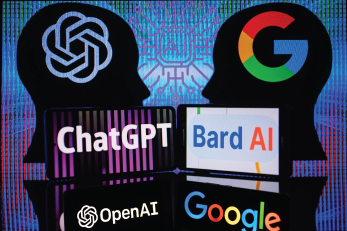Artificial Intelligence (AI) has revolutionized how we approach productivity, creativity, and problem-solving. Among the tools leading this charge is ChatGPT, an advanced AI model designed to assist in countless ways. Whether you’re looking to streamline everyday tasks, generate new revenue streams, or uncover untapped opportunities, this guide offers over 50 practical applications for ChatGPT, alongside expert insights into prompt engineering and ethical considerations.
1. Day-to-Day Enhancements with ChatGPT
Personal Productivity
- Organize Your To-Do List: Generate prioritized daily schedules based on your goals.
- Plan Meals: Create weekly meal plans tailored to dietary preferences.
- Streamline Email Replies: Draft polite, professional responses to emails.
- Generate Summaries: Summarize lengthy articles, reports, or books.
- Learn New Skills: Receive personalized step-by-step guidance for learning new hobbies or skills.
- Draft Letters: Write cover letters, thank-you notes, or complaint letters.
- Create Personalized Workout Plans: Tailor routines to fitness levels and available equipment.
- Language Translation: Translate text or practice learning a new language.
- Brainstorm Ideas: Generate ideas for personal projects, events, or gifts.
- Calendar Optimization: Find the best times for meetings or personal activities.
Creative Tasks
- Write Poems or Stories: Get inspiration or full drafts for creative writing projects.
- Edit Content: Refine your writing with grammar, style, and structure suggestions.
- Generate Social Media Content: Create captions, hashtags, and content ideas.
- Craft DIY Instructions: Break down projects into manageable steps.
- Scriptwriting: Develop ideas for videos, podcasts, or plays.
- Naming Assistance: Brainstorm names for pets, businesses, or creative works.
- Songwriting Help: Collaborate on lyrics or melody ideas.
- Photo Captions: Generate witty or heartfelt captions for personal photos.
Financial Management
- Budgeting Advice: Design monthly budgets tailored to your income and expenses.
- Investment Research: Summarize market trends and opportunities.
- Track Expenses: Create simple templates for managing personal finances.
- Freelance Rate Suggestions: Determine fair pricing for services.
- Debt Reduction Strategies: Develop actionable plans to pay off loans.
2. Boosting Earnings and Exploring New Opportunities
E-Commerce
- Product Descriptions: Write compelling descriptions for online listings.
- Keyword Optimization: Generate SEO-friendly tags for products.
- Customer Queries: Create automated responses for FAQs.
- Ad Campaigns: Develop creative copy for social media ads.
- Market Research: Analyze consumer trends or competitor strategies.
- Pricing Analysis: Determine optimal pricing strategies.
Freelancing and Consulting
- Portfolio Building: Develop engaging personal bios and project descriptions.
- Pitch Templates: Draft proposals for potential clients.
- Service Offerings: Brainstorm new services to offer based on market demand.
- Time Management: Automate routine tasks like invoicing or follow-ups.
- Networking Scripts: Create personalized outreach messages for potential collaborators.
Content Creation
- Blog Post Drafts: Generate full articles or outlines.
- Podcast Scripts: Develop engaging episodes or interview questions.
- YouTube Ideas: Brainstorm video topics based on trending searches.
- E-Book Creation: Write drafts of guides or manuals for sale.
- Newsletter Content: Curate and draft engaging emails for subscribers.
Online Courses and Coaching
- Curriculum Development: Outline and design course structures.
- Student Support: Draft answers to common questions or troubleshooting guides.
- Marketing Copy: Create engaging course descriptions.
- Feedback Collection: Develop surveys for students.
3. Basics of Prompt Engineering: Strategies for Effective Prompts
Prompt engineering is the art of crafting queries that yield the most accurate and helpful responses from AI. Here’s how to get the best results:
Understanding Prompt Structure
- Be Specific: The more details you provide, the better the AI’s response.
- Example: Instead of “Write a blog post,” try “Write a 500-word blog post about eco-friendly travel tips for families.”
- Define Tone and Style: Specify if you want professional, casual, humorous, etc.
- Example: “Draft a formal email apologizing for a delivery delay.”
- Set Context: Provide background information to guide the AI.
- Example: “Assume you are a career coach advising a mid-career professional.”
Tips for Experimentation
- Iterate: Refine prompts based on initial responses.
- Use Examples: Show desired outcomes by including examples in the prompt.
- Break Complex Tasks: Divide lengthy prompts into manageable parts.
- Ask for Lists: When exploring options, request numbered or bulleted lists.
- Example: “List 10 unique business ideas for a part-time entrepreneur.”
Common Pitfalls to Avoid
- Overloading Prompts: Avoid asking for too much in one query.
- Vague Requests: Ensure clarity and precision in your wording.
4. Integrating AI into Your Business
Automating Routine Tasks
- Email Sorting: Categorize emails by priority or topic.
- Customer Follow-Ups: Draft automated reminders or thank-you notes.
- Data Entry: Create templates for easy input and tracking.
- Meeting Summaries: Generate concise notes from discussions.
- Document Drafting: Automate contracts, proposals, or reports.
Revolutionizing Customer Support
- Chatbots: Train AI to handle common queries in real-time.
- Personalized Responses: Customize interactions based on customer data.
- Feedback Analysis: Summarize customer reviews to identify trends.
E-Commerce Strategies
- Upselling Suggestions: Use AI to recommend products based on customer preferences.
- Inventory Management: Predict demand trends using historical data.
5. Ethical Considerations for Using AI
Transparency
- Disclose AI Use: Let customers know when they’re interacting with AI.
Avoiding Bias
- Check Outputs: Regularly review AI responses for fairness and inclusivity.
- Diverse Data: Train AI on varied datasets to reduce bias.
Privacy Concerns
- Secure Data Handling: Avoid sharing sensitive or personal information.
- Anonymize Data: Remove identifiable details when using AI for analysis.
Responsible Usage
- Avoid Over-Automation: Balance AI tools with human oversight.
- Environmental Impact: Opt for energy-efficient AI solutions.
Final Thoughts
ChatGPT is a transformative tool that can enhance productivity, unlock new opportunities, and reshape how we approach work and creativity. By mastering prompt engineering and integrating AI responsibly, you can maximize its potential while maintaining ethical integrity. Start small, experiment often, and watch as AI becomes a seamless part of your personal and professional life.


